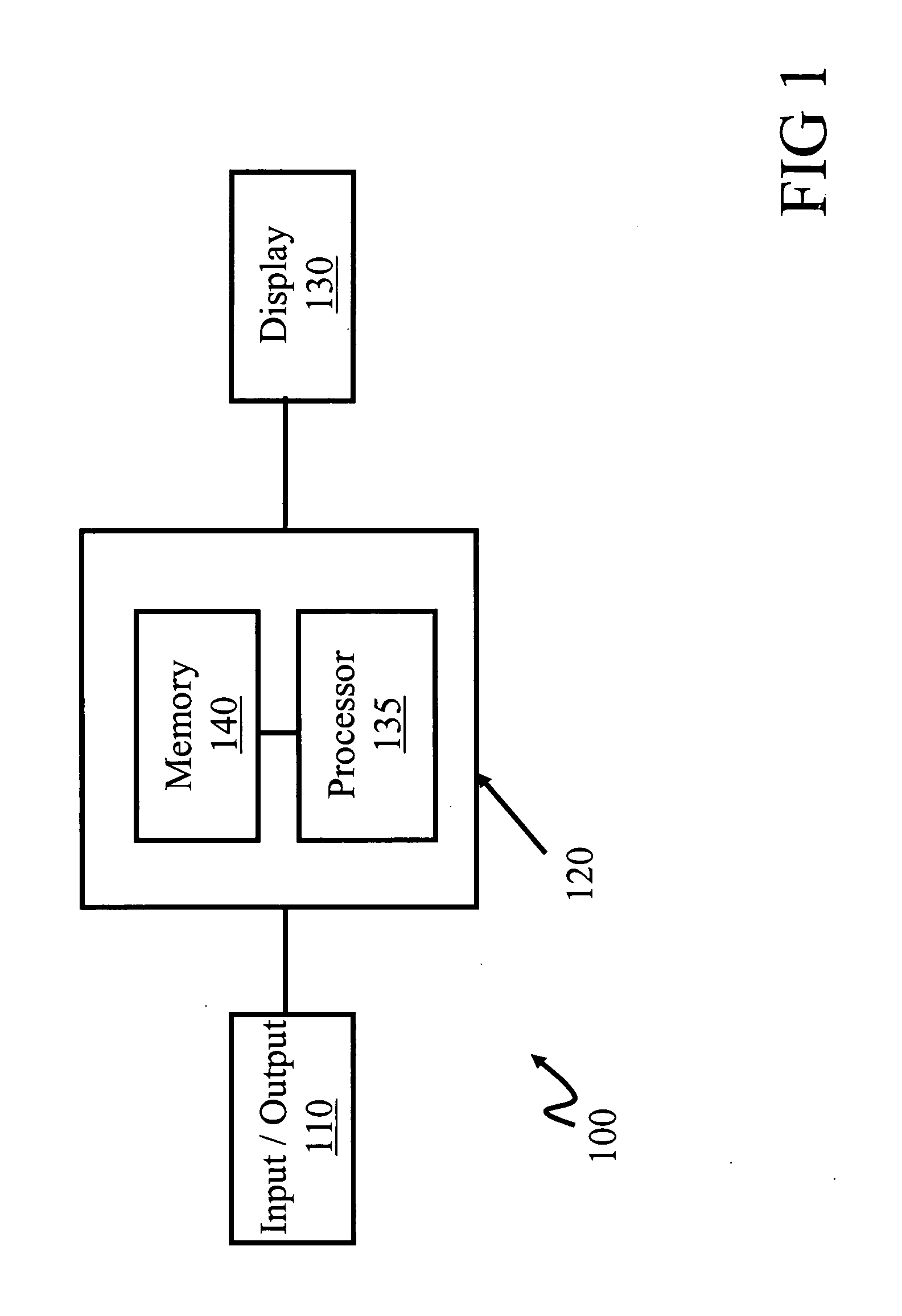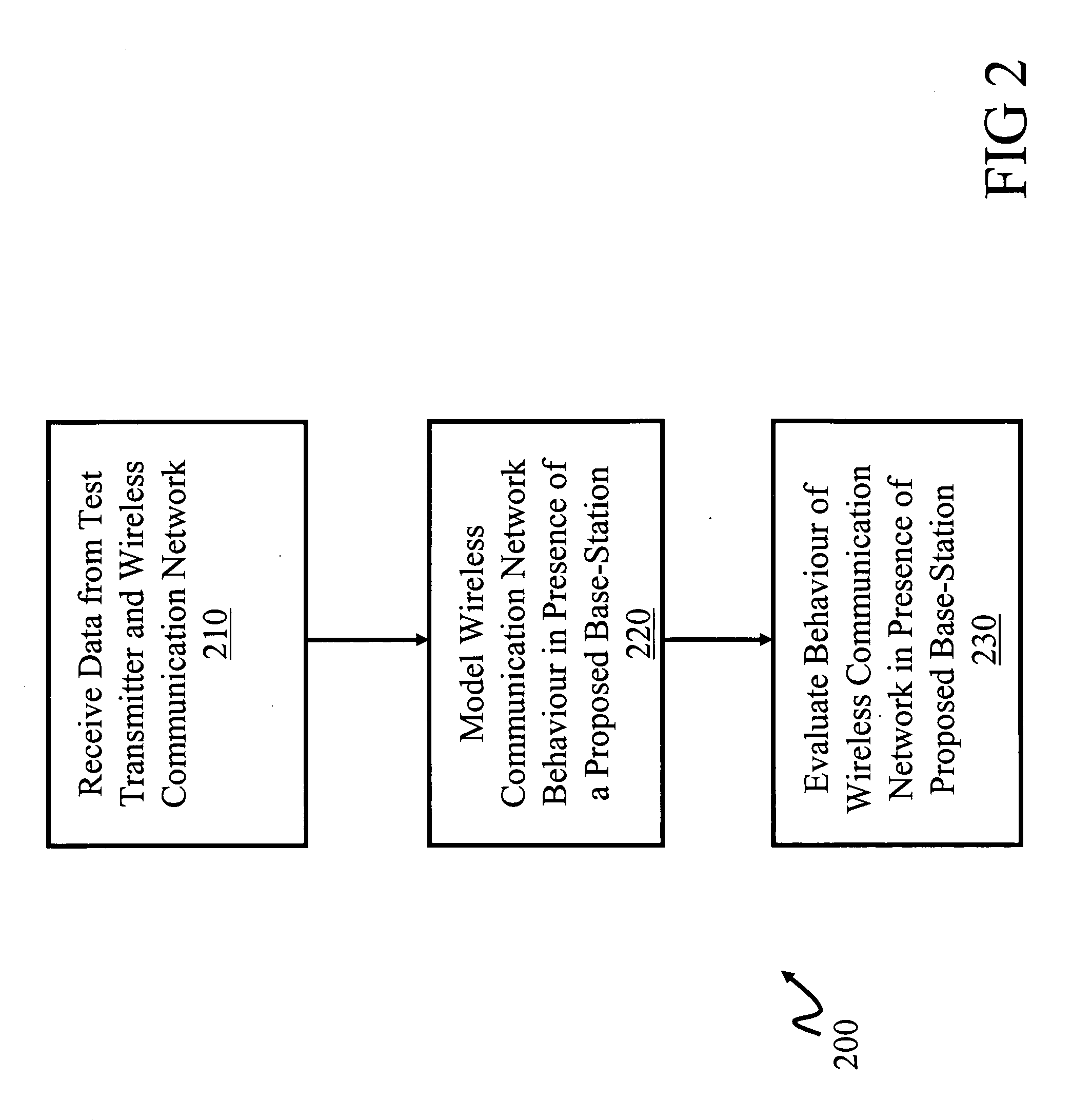System and method for coverage analysis in a wireless network
a wireless network and coverage analysis technology, applied in the field of wireless communication networks, can solve the problems of over-utilization of precious spectrum resources, difficult to plan such networks, and high associated costs of such deployments
- Summary
- Abstract
- Description
- Claims
- Application Information
AI Technical Summary
Benefits of technology
Problems solved by technology
Method used
Image
Examples
Embodiment Construction
[0034]FIG. 1 depicts a system 100 operable to conduct coverage analysis in a network according to embodiments of the present invention. The system 100 comprises an input / output apparatus 110, a computing apparatus 120, and display apparatus 130. The computing apparatus is operable to analyze data and comprises a processor apparatus 135 and a memory apparatus 140. The system 100 is configured to receive network and test transmitter data through the I / O apparatus 110, process the network and test transmitter data with the processor apparatus 135, store the results of the processed data on the memory apparatus 140, and display results of the processed data on the display apparatus 130. In one embodiment the system 100 is a computer, such as a personal computer, that is typically comprised of hardware suitable for processing data and includes a central processing unit, a random access memory, hard-disk storage, a network interface for communicating over a network, and removable media st...
PUM
 Login to View More
Login to View More Abstract
Description
Claims
Application Information
 Login to View More
Login to View More - R&D
- Intellectual Property
- Life Sciences
- Materials
- Tech Scout
- Unparalleled Data Quality
- Higher Quality Content
- 60% Fewer Hallucinations
Browse by: Latest US Patents, China's latest patents, Technical Efficacy Thesaurus, Application Domain, Technology Topic, Popular Technical Reports.
© 2025 PatSnap. All rights reserved.Legal|Privacy policy|Modern Slavery Act Transparency Statement|Sitemap|About US| Contact US: help@patsnap.com



